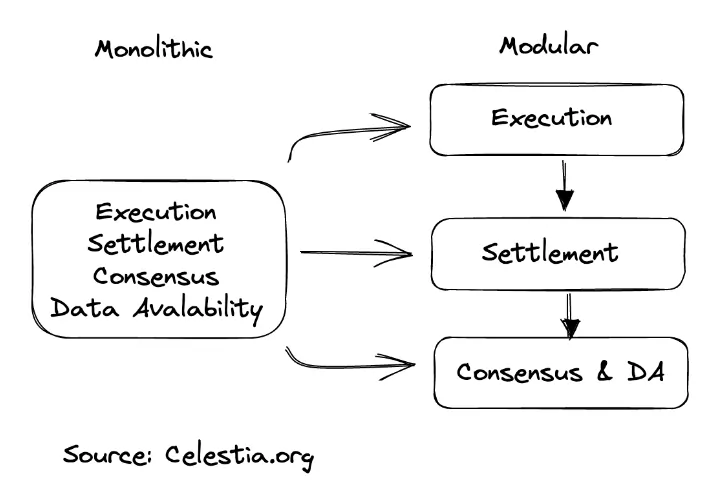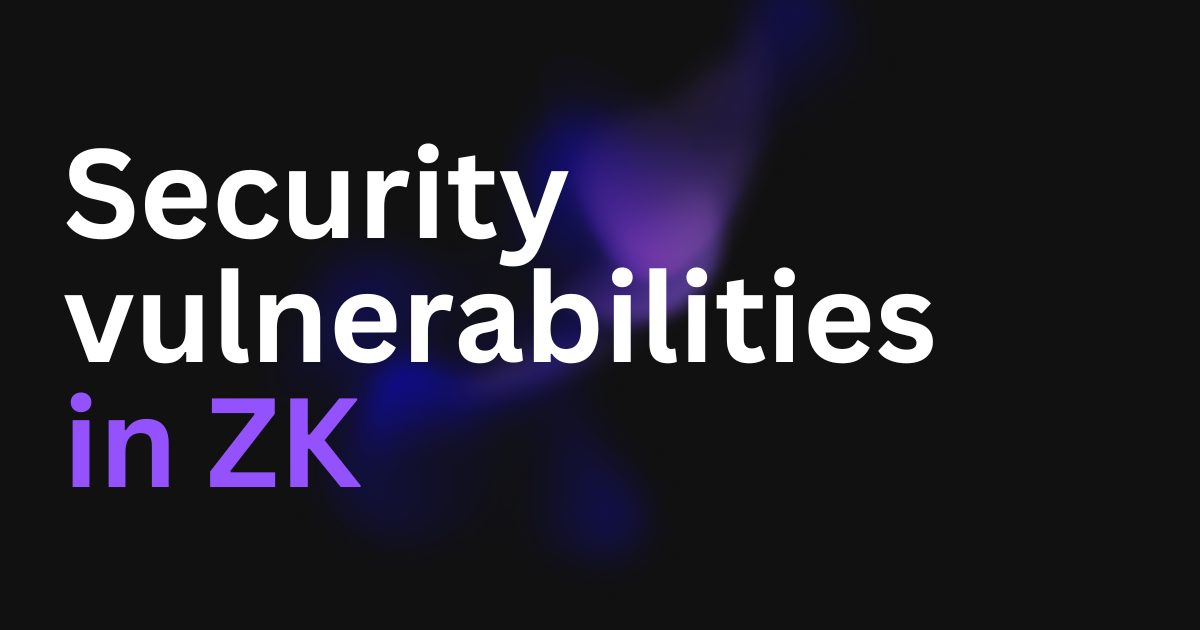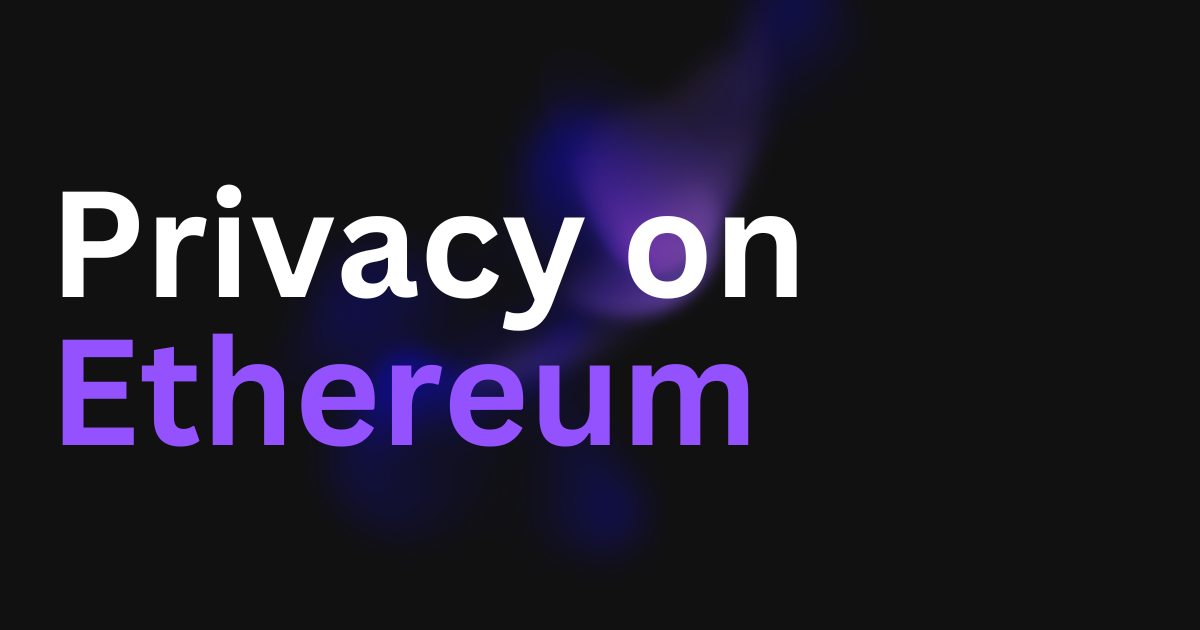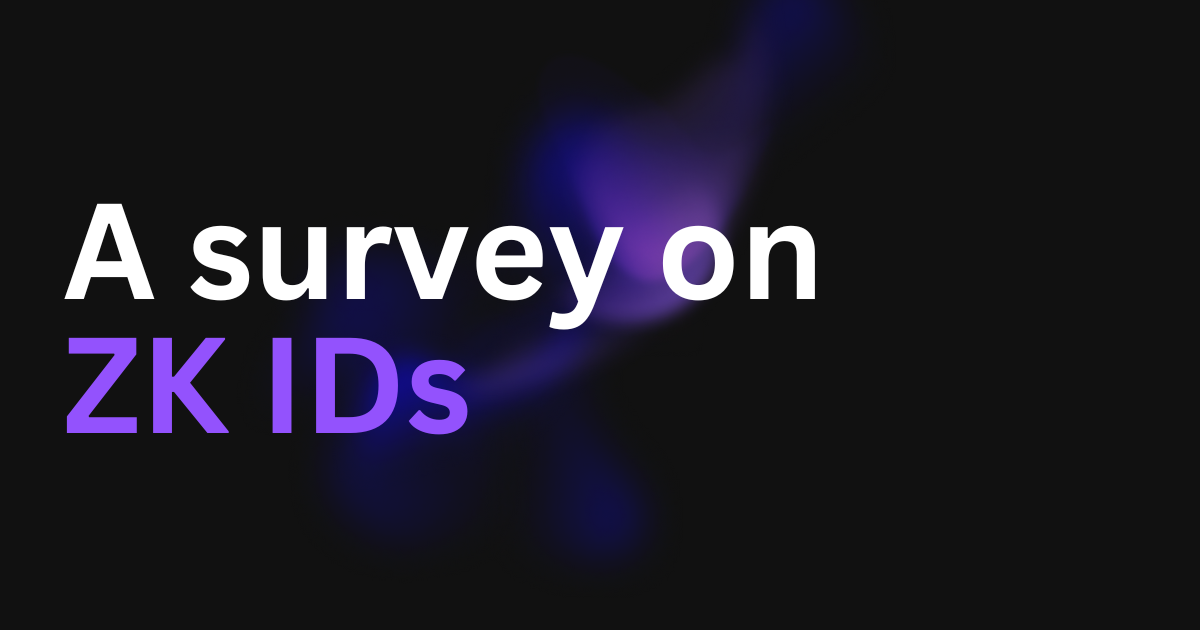Cosmos Shared Security Showdown
Celestia, ICS, and Mesh: The Interchain Security Face-Off

Cosmos: The battlefield for shared security
Intro
In the Cosmos ecosystem, we are currently experiencing a time when shared security is shaping the conversation. On the one hand, we have the Hub’s latest and most prominent feature, Interchain Security. On the other hand, we have the development of Mesh security and the modular future proposed by Celestia. At a high level, all three solutions offer the same benefits to builders coming to build in the greater Cosmos ecosystem, but deep inside, all three models are very different. This article will try to answer the question of whether Celestia is a competitor to the Cosmos Hub and Mesh Security.
Sign up for our quarterly State of ZK report
Thank you!
We have sent you an email.
A Comparison Between the Three
Let’s start by comparing the main unique selling propositions of the three solutions to understand where each thrives and what some of their weaknesses are.
Interchain Security
Interchain Security enables validators on a provider blockchain to use their stake on that chain to participate in the consensus of a consumer blockchain simultaneously. For Interchain Security to work efficiently and securely, cross-chain information must be communicated effectively. This feature requires integration into the inter-blockchain communication protocol (IBC) application layer, which establishes an interchain standard (ICS) and is then incorporated into an IBC release. A single network participant is responsible for managing multiple computation channels in Interchain Security.

The trust in this feature is derived from the fact that the same validator set is responsible for creating blocks on both chains. Two types of consumer chains exist, namely custom and contract consumer chains. Custom consumer chains are based on Cosmos SDK and have incorporated the Interchain Security module after approval by the provider chain’s governance. Contract consumer chains, on the other hand, utilize a blueprint to establish a blockchain through a series of smart contracts. This simplifies the development process and reduces the provider chain’s risk since a contract consumer chain functions as a sandboxed app chain that pays its fees with the provider chain’s token.
Mesh Security
Mesh Security in Cosmos is essentially Interchain Security v3, which allows interconnected blockchains to secure one another bidirectionally. Cross-chain staking is central to Mesh Security, whereby validators validate transactions on multiple chains and are incentivized to behave well across both chains. This would increase their trustworthiness, making more delegators choose them as validators. Additionally, superfluid staking enables users to drop assets into a liquidity pool and receive a Liquidity Provider share with underlying economic value, which can then be staked itself. This can be combined with Mesh Security to provide security for other chains.

The Chart above was put together by @sunnya97 from Osmosis. The graphic shows the overlapping validators for any combination of 2 cosmos zones. This is useful because it demonstrates where strong or weak economic relationships already exist.
Celestia
The Celestia blockchain aims to bridge the gap between Rollups and App Chains. The blockchain uses Tendermint and the Cosmos SDK, making it IBC-enabled and part of the ecosystem. The core technology that makes Celestia unique is Data Availability Sampling, which allows for a scalable and secure base layer. Regarding providing security to other blockchains, Celestia separates the functions of a blockchain into separate layers and protocols, allowing for better scaling, flexibility, and innovation.

There are three essential functions to split: consensus, data availability, and execution. Celestia handles consensus and data availability, while other protocols aka sovereign rollups handle execution. The goal is to achieve a credibly neutral data availability layer enabling anyone to deploy a blockchain without the overhead of bootstrapping a new consensus network.
Weaknesses
One weakness of the ICS model is that it may be expensive for smaller consumer chains to rent the security from the provider chain as well as it may be challenging for validators from the provider chain to run the nodes required for both chains. A recent example is Neutron, which pays the Cosmos Hub 25% of transaction fees and MEV recapture. Meanwhile, a validator must invest an extra $400 a month to run the node for Neutron. This poses a risk in case Neutron does not generate enough revenue or ATOM price does not rise as much as expected for smaller validators, leading to centralisation. Also, scalability may be an issue if too many consumer chains rent security from the same provider at a given time.
Given that Mesh Security uses the same technology, it may encounter similar issues regarding economic alignment. Also, due to its bidirectional nature, at least in its initial stage, Mesh Security may face some security guarantee issues, such as concerns about the difficulty of proving certain slashable offences on-chain, such as when a validator mines an invalid block.
On the other hand, Celestia may need help providing the same level of economic security as the Hub due to the high amount of stake concentrated in the latter.
| Solution | Strengths | Weaknesses |
|---|---|---|
| Interchain Security | Enables validators to participate in multiple blockchains simultaneously, based on IBC, offers a strong level of security for ATOM holders | Expensive for smaller consumer chains, scalability issues, centralization risks for smaller validators |
| Mesh Security | Bidirectional, incentivizes good behavior of validators, superfluid staking, improved security for interconnected blockchains | Economic alignment issues, security guarantee issues, like proving certain offenses on-chain |
| Celestia | Scalability, flexibility, low-cost, uses Tendermint and Cosmos SDK, Data Availability Sampling | Cannot provide the same level of economic security as the Hub due to a high amount of stake concentrated in the latter |
Conclusion
In conclusion, it is clear that all three solutions have their own unique selling points and drawbacks.
While Interchain Security is great for supporting the ATOM holder community, it may not be the most cost-effective option for smaller consumer chains.
Mesh Security incentivizes good behaviour, but may face economic alignment and security guarantee issues.
Celestia offers flexibility and a lower cost for projects but may not be able to provide the same level of economic security as the Hub.
It is likely that we will see all three solutions coexisting within the greater Cosmos ecosystem, with each catering to a specific set of needs. Additionally, Celestia’s IBC-enabled chain will allow for a new wave of apps that will be able to communicate with other sovereign chains, benefiting the entire ecosystem.
There may even be opportunities for collaboration between the Hub and Celestia in the future, such as Celestia’s Roll Ups renting out security from the Hub or other IBC chains via ICS to use as their decentralized sequencer sets.



